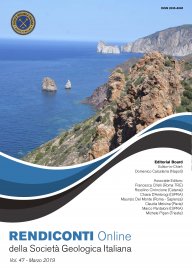
Squaring the cycle: the integration of Groundwater processes in nutrient budgets for a basin-oriented remediation Strategy
Arianna Musacchio (a), Viviana Re (a), Carlo Andrea Delconte (b), Erica Racchetti (c), Elisa Soana (c,d), Raffaella Balestrini (b), Marco Bartoli (c,e), Pierluigi Viaroli (c) & Elisa Sacchi (a)
(a) Department of Earth and Environmental Sciences, University of Pavia, Via Ferrata 1-27100 Pavia, Italy.
(b) Water Research Institute, National Research Council (IRSA-CNR), Via del Mulino 19, 20861 Brugherio, MB, Italy.
(c) Department of Chemistry, Life Sciences and Environmental Sustainability, University of Parma, Parco Area delle Scienze 11/A - 43124 Parma, Italy.
(d) Department of Life Sciences and Biotechnology, University of Ferrara, Via L. Borsari 46 - 44121 Ferrara, Italy.
(e) Coastal Research and Planning Institute, Marine Science and Technology, Center of Klaipeda University, H. Manto g. 84 - LT-92294, Klaipeda, Lithuania.
Corresponding author e-mail: arianna.musacchio01@universitadipavia.it
Abstract
Keywords
Get Full Text